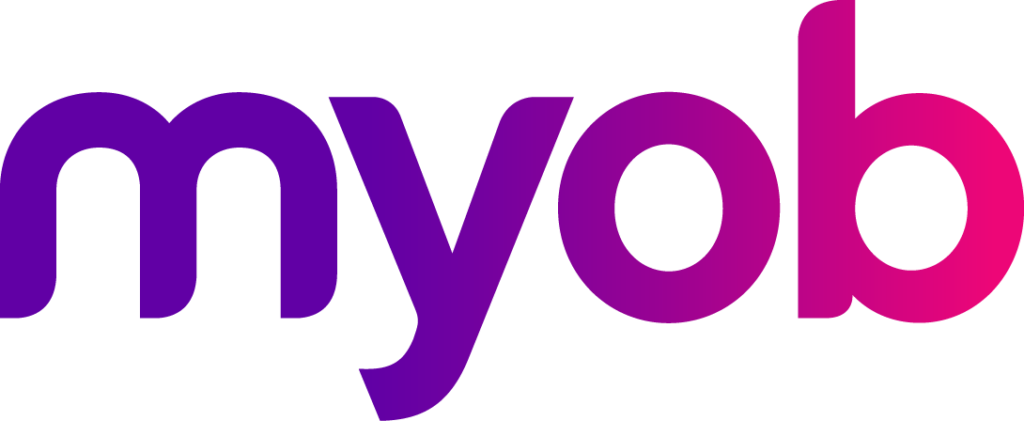SMSF
SMSF Administration
– For all your admin and compliance needs
Managing your existing SMSF
If you’ve already set up your own SMSF, we can manage that too. We’ll work with you to ensure you have the level of flexibility you’re comfortable with, and ensure you continue to meet all your trustee compliance obligations.
What we do
- Prepare Annual Financial Statements and Member Statements
- Lodge your annual tax return
- Organise your SMSF audit
- Manage your monthly/quarterly/yearly BAS and IAS obligations
- Preparation trustee minutes
- Supply any other compliance related documents that may be required ad-hoc
- Provide Transfer Balance Account Reporting (TBAR)
- Teach you about new super reforms and changes to the industry
- Assist with additional compliance needs for those with in-house assets, collectables or related party investments
SMSF Registrations
What we do
- Complete your ABN and TFN registrations
- Register your for GST (where required)
- Operate as the registered office for your corporate trustee
- Prepare and lodge any required forms with ASIC
SMSF packages
Helping you reach your goals.
We work with you to manage your investments, and tailor a package that provides you with the best investment in your future.
Accura Key Super Package
We provide straightforward administration services for your SMSF, and help you manage your basic investments. These are things like cash, term deposits, and Australian shares.
What we do
- Management of your annual compliance and statutory requirements, such as preparing your financial reports, member statements, and lodging your tax return
- Flexible investment products. You can use any bank or broker that can provide automated data feeds
- Up to 20 share trades per year
- Investments limited to cash, term deposits, and Australian Shares
- Automation of all bank accounts and share trading platforms
- Access to a range of education tools and seminars
Pricing starts at $1500 per year, plus GST.

Accura Classic Super Package
This package is ideal if you’ve got more complex investments, such as managed funds or international shares. We provide complete SMSF management, giving you flexibility and control in how you invest. It allows for limited recourse borrowing arrangements, and includes administration of one investment property.
What we do
- Management of your annual compliance and statutory requirements, such as preparing your financial reports, member statements, and lodging your tax return
- Daily online access via your super fund dashboard, available on any device
- Quarterly reconciliation of all transactions
- Assistance with rollovers from your existing super funds
- Reconciliation of non-data fed assets, such as international shares and artwork
- Administration of account-based or other pension types
- Support from a dedicated client manager
- Access to a range of education tools and seminars
Pricing starts at $2,350 per year, plus GST.

Is a SMSF right for me?
There are some clear situations where a SMSF will be the right choice for your future. The following case studies will give you an idea of how starting your SMSF works.
Please note that these examples are all general illustrations only, and the results will differ depending on the investment returns achieved which can’t be guaranteed. This information was prepared without taking into account your objectives, financial situation, or needs. Because of this, you should, before acting on this information, consider its appropriateness, having regard to your objectives and financial situation.
Luke is 33 years old and currently has his super in a retail fund. He earns $90,000 a year and only makes his standard Superannuation Guarantee contributions from his employer. His current balance is $45,000 invested in a balanced portfolio.
If Luke wants to retire when he turns 65 he would retire with approximately $366,000 (calculated using the ASIC Superannuation Calculator). This would only give him a retirement income of $21,500 per year based on his life expectancy.
If Luke started salary sacrificing $5,000 a year now from his employer, and contributes an additional $1,000 a year from his after-tax money, Luke could retire with $554,000. This is a substantial increase from just putting a little extra away a year. Salary sacrificing this way will let Luke save $2,175 in tax per year based on the current tax rates.
When Luke’s mother passes away she leaves him an inheritance of $180,000. Luke decides to put this into super as a non-concessional contribution. Luke has triggered the bring forward rule, as he has exceeded his cap of $100,000. For the following two years Luke can only contribute a combined total of $120,000 in non-concessional contributions.
By doing all of the above Luke will now have an estimated super balance of over $780,000 when he turns 65. This gives Luke a retirement income of $46,000 a year—a much healthier retirement than if Luke made no additional contributions to super.
Luke is now 50 and has a balance of $315,000. His recent non-concessional contribution gives him a total balance of $495,000.
Luke wants to take a bit more control of his super, and after speaking to a financial advisor decides to set up his own SMSF. He currently has life insurance in his retail fund, so his advisor recommends he keep a small balance in there to support any life insurance premiums, or consider rolling the policy into the new SMSF. If he were to completely roll out of his retail fund his life insurance would be automatically cancelled.
Luke sets up his SMSF and chooses a corporate trustee. He also establishes his investment strategy, which states how he’ll be investing his super balance, which will be reviewed every year. After setting up a bank account and ensuring all his documentation has been signed and dated, Luke is ready to start investing.
Luke believes it’s a good time to get into the property market, and finds a commercial factory unit that he wishes to purchase for $400,000. He leaves the balance of the fund as cash to support any expenses as they arise, as per his investment strategy. Over time the fund increases in value due to a healthy income received from the property, and Luke begins to invest in direct shares and managed funds through his advisor. He always ensures he has enough cash to meet any expenses.
See the next example to see how automation can help Luke with his document management, administration costs, and provide him with real time information regarding his SMSF.
Technology has come a long way in recent years. After Luke sets up his SMSF with his accountant they advise him of the benefits of having his fund as automated as possible. These include (but aren’t limited to):
- No more searching for lost statements
- Future reduction in administration fees
- Timely information regarding bank transactions
- Timely information regarding share trading
Luke completes the relevant authorities for his bank account and share trading account. Within a few days he is able to see his current bank balance and shareholding balance, including the market values on that day. As a result he can see an estimate of his member balance at any given time.
Instead of filing away his statements and contract notes, Luke stores them electronically, as he doesn’t need to provide them to his accountant when it comes time to prepare the annual financials and tax return.
John and Lucy heard from a friend that they can own property within a SMSF. After seeking financial advice they decide that a property investment suits their needs, so they set up an SMSF and rollover $350,000 from their retail funds.
The property they find is a residential property that’s on the market for $600,000. They don’t have enough in their fund to make this purchase, but after seeking further advice they’re told they can borrow within their super under a limited recourse borrowing arrangement.
In order to do this, however, they must set up a Bare Trust as a SMSF isn’t allowed to purchase property directly where borrowings are used. This Bare Trust will be the purchaser of the property and the SMSF will be borrowing against that property. The SMSF will be the one making the repayments on the loan and receiving the rental income. Once the loan has been repaid in full the legal ownership of the property can be transferred to John and Lucy’s SMSF.
It’s very important to get everything right when considering a limited recourse borrowing arrangement, as the rules around SMSFs borrowing money are strict and complicated. When undertaking this arrangement you need a Statement of Advice to be prepared by a qualified Financial Planner.
Emily is about to turn 60 and is thinking of retiring. She heard that when she reaches 60 she’s able to commence a tax-free pension. Her current pension balance is $550,000, and is held in a SMSF for which Emily and her brother are the members and trustees.
Emily writes to the trustees as a member of the fund requesting she be paid a pension from her 60th birthday on 1 March 2017, and advised them of her pending retirement. The trustees respond to the member, confirming they’ve received and accepted the request. The trustees advise Emily of the balance supporting the income stream, the tax components and the minimum pension.
As Emily is starting a pension mid-year she only needs to take a pro-rated amount of the minimum (4mths/12mths x $22,000 being the first year minimum).
Once Emily is in the pension phase, the earnings on her balance will be tax free. She must draw her minimum every year in order to continue receiving these tax concessions.
Emily is aware that she’s able to make further contributions until she reaches 65. See our next case study on in-specie transfers of assets to super.
Emily is under 65 and owns a commercial property with her brother that’s worth $580,000. After much discussion and personal capital gains tax consideration, Emily and her brother decide they would like to hold the property in super. As they’re both under 65 they can contribute up to their non-concessional contribution cap with the option to bring forward the next 2 years using the “bring forward rule”.
After engaging a lawyer and their financial advisor, Emily and her brother contribute their property in-specie to their super by preparing transfer documents and applying for the stamp duty exemption. As Emily and her brother own the property 50/50 they’ll each be contributing half of the property to super, making their non-concessional contribution $290,000 per member.
This doesn’t exceed their cap, and as the beneficial owners of the property haven’t changed, they receive a full exemption from stamp duty (subject to Office of State Revenue exemptions which may be available, to be assessed on a state by state basis).
Emily has therefore been able to top up her super fund before turning 65, and as she’s in pension phase won’t be taxed on any capital gain when the property is sold, or the income from rent is received.
Now that Emily is retired, she needs to consider what other steps the trustees should take to ensure the continuation and management of their fund.
Every year the trustees advise Emily of the minimum pension she has to draw to continue the tax concessions of her pension phase.
After reviewing the fund documents with her accountant, Emily decides to take action regarding her estate planning. She consults a lawyer and drafts up her Will. After nominating her son as Executor of her estate, she’s aware that upon her death he’ll be appointed trustee alongside her brother.
Although she believes they’ll act in accordance with her wishes she decides it’s best to put a Binding Death Benefit into place to avoid any confusion. This nomination will lapse after 3 years so must be reviewed regularly. In her Nomination, Emily leaves half of her benefit to her son directly, and the remainder to her Legal Personal Representative of her Estate. This means the benefit will be distributed in accordance with her Will.
Emily and her brother also decide to review their investment strategy. As they’re both a bit older, after consultation with a Financial Planner they decide to move to a more conservative investment profile while maintaining the property. This provides a steady income with lower risks than they had previously.

